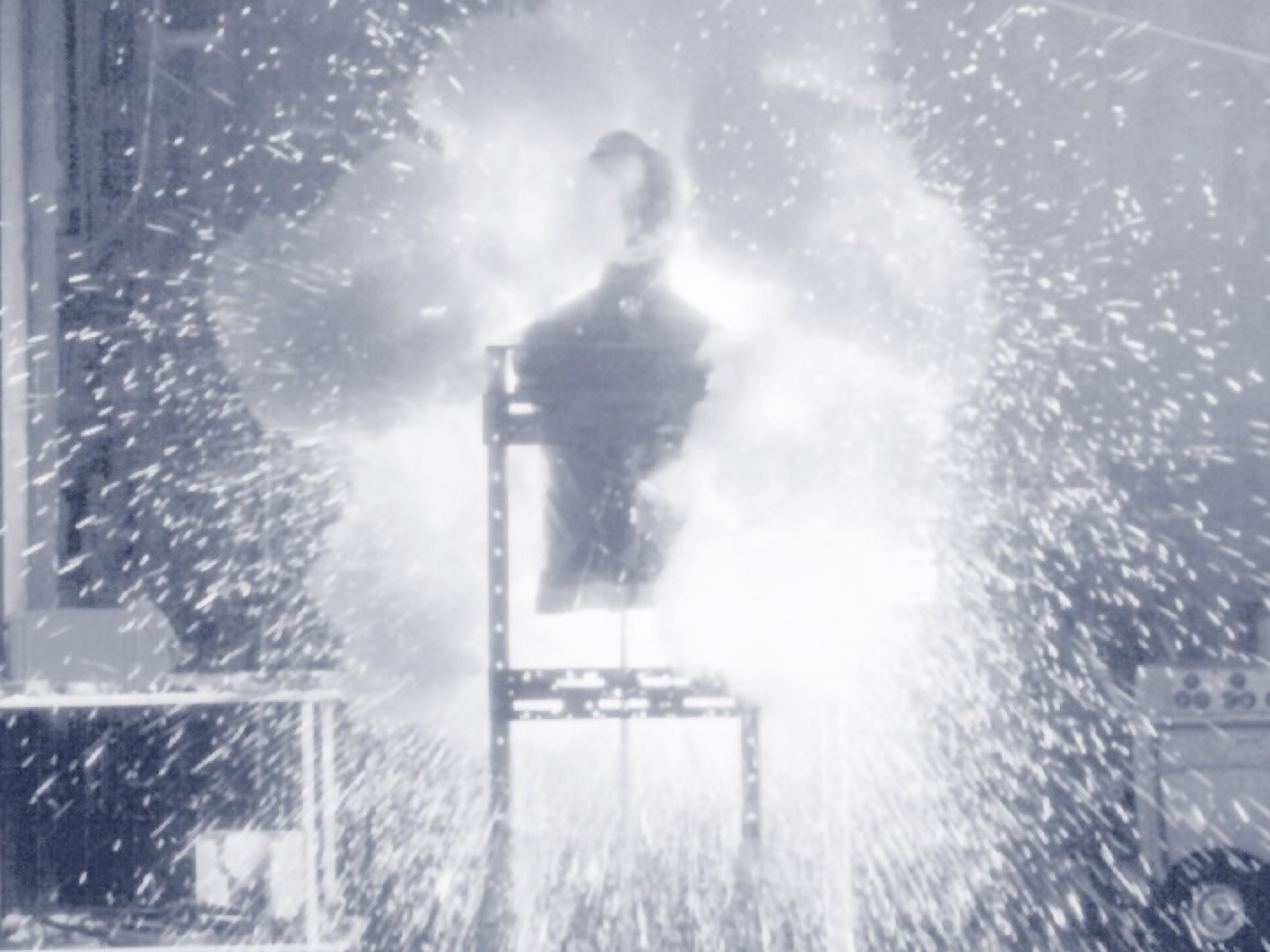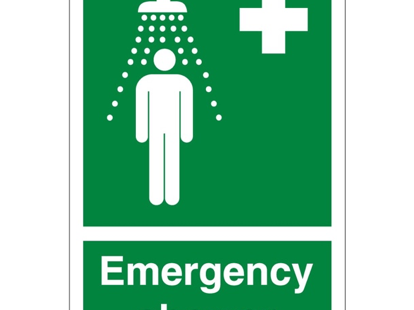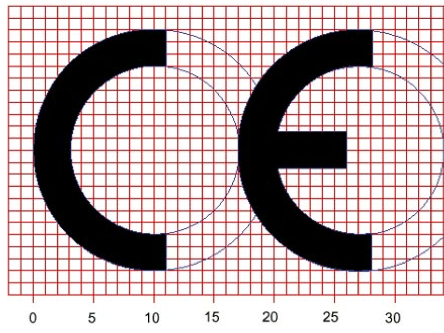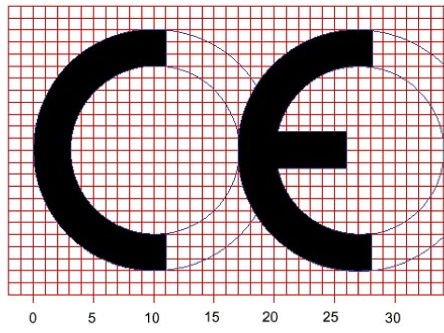Technique of Flame Retardant Fabrics
Fabrics for firefighting used in flame retardant clothings are manufactured from specially designed glass fiber or glass fiber blends. Commonly known flame retardant glass fiber is “aramid”. Aramid glass fibers are named according to their chemical bonds as metaaramid and paraaramid.
Fire retardant aramid glass fibers are produced by many companies. These aramid fibers are released to the market in different brand names.
Paraaramid glass fibers have higher resistance and better flame retardant properties than metaaramid glass fibers. These glass fibers in various brands and names show similar properties.
Some aramid fiber manufacturers and their brand names are shown below.
Meta-aramid (Polymeta-phenyleneisophtlamide)
Nomex® (DuPont – USA), Conex® (Teijin – Japan), Aramet®(Teijin – Japan), Kermel®( Kermel Rhodia- France), New Star® ( Yantai Spantex- China)
Para-aramid (Poly-para-phenylene Terephtalamide)
Twaron® (Teijin – Japan), Technora® (Teijin – Japan), Arenka® (Akzo- Netherland), Kevlar® (DuPont – USA), ARTEC® (JSC Kamenskvolokno - Russia)
Heat and flame retardant clothes are manufactured from these aramid glass fibers or blends which are manufactured with highly advanced technology. Performance of the fabric is determined by the blend rate of the aramid used in the fabric. With the determined performance properties, these fabrics can be used in various areas as stated below.
- Industry (petrol & gas, cement, aluminum & iron-steel, foundry, marine, search and rescue etc.)
- Electricity Distribution Companies, Military, Police Forces, Forest Firefighting
- Marine Firefighting, Fire Brigades
- Places or situations where the heat and flame may occur such as tanker fires, plane fires, disasters.
The main priority is the risk of the environment. After making a proper risk analysis, what type of fabric and what kind of garment to be used is determined and the protective clothing types that can be chosen is as explained below according to the type of the heat and flame and dangers of the environment. These garments can be produced as single of multi layered according to the risks.
Structural Firefighting Suits
FYRPRO® series fireman suits are manufactured as per EN 469:2005 standard and certified as per (EU) 2016/425 PPE Regulation as a requirement of Turkish and European Regulations.
FYRPRO® series firefighting suits-Fireman Clothings are Multi-layered and specially designed for the purposes which are more risky and dangerous. Protects against flame and also prevents the contact of chemicals and water to the skin (thanks to its moisture barrier that is breathable and has high penetration resistance).
Protective clothings used in firefighting are technical garments for professional purposes that need to be used by trained individuals. For this reason, not only manufacturers but also marketers must learn the technique and present it to end users. Manufacturers should not content of what they have and must apply to the latest versions of the standards and follow the innovations in their production.
Authorities in the firefighting departments, where these clothings has to be used, must be selective in choosing these garments, that is because they are protective equipment against fatal injuiries and examine the conformity of the related standards.
IST Safety Ltd releases technical firefighting suits to the market in the brand of FYRPRO and aluminized fire proximity suits, which are used in different firefighting techniques, in the brand of FYRAL.
EN 469:2005, which is the standard or fireman suits, standard defines the lowest limits of fire resistance of different heat types, and also includes the lowest value of the suit against water pressure and highest resistance values against water vapor permeance. They are categorized as Level 1 and Level 2 according to these factors. Level 2 suits provides the best protection and maximum comfort.
Main purpose of fireman suits is the protection of the user against heat stress. This is provided by using the high heat resistant layers and keeping the user dry. The greatest fact in the firefighting “Water” is fatal if stays on the firefighter.
Because water, transmits heat faster than air (21 times faster at 90 C), if the water is vapor, this will be much faster. In this respect, it is very important to preserve air spaces between layers used in the fireman suits. For this reason, moisture barriers in layer system are used. This barrier shows resistance to the water from outside and does not let the water in, also evacuates the moisture from sweating through the micro pores. Provides comfort and keeps the user dry.
Fireman suits are generally formed with 4 main layers.
- Outer layer (Fire retardant fabric which is resistant against heat and mechanical effects, water repellent)
- Moisture Barrier (PU or PTFE membrane laminated on aramid based conductor)
- Heat Barrier (Double or single layered, generally non-woven fire retardant layers)
- Inner Liner (May be quilted on heat barrier, low weight and comfortable fire retardant fabric)
What is the meaning of X, Y, Z and Level 1, Level 2 Protection Levels at fireman suits?
Two different performance levels are described in EN 469:2005 standard; level 1 and level 2. Level 2 suits provide higher protection than level 1 suits. Fireman suits should be marked according to their performance levels. For instance, X2, Y2, Z2 indicates level 2 suit or X2, Y2, Z1 indicates level 1 suit.
X defines the heat transfer level for flame and radiation.
Y defines the water penetration level.
Z defines the water vapor resistance level.
Following table shows related test methods and requirements for level 1 and level 2.
Routine Inspection Guide For FYRPRO® Series Fireman Suits
FYRPRO® fireman suits should be inspected in every six months, and after each use regardless of the last inspection date.
When performing a routine inspection for your fireman suit check for any;
· Thin spots
· Holes
· Tears
· Discoloration
· Embrittlement
· Bad smell due to humidity or fumigation
- If your suits has reinforcements on knees, elbows and/or shoulders, examine the reinforcements.
- Check elasticity of knitted cuffs and check thumb hole for any damage.
- Check for seam integrity. Any missing, loose, burn, torn or melted seams should be noted, and authorised people should be informed.
- Check for reflective trim functionality. Stand in a dark place, at least 20 feet away from the suit. Hold a flashlight and check the reflectiveness of the reflective tapes.
- Inspect all closure systems to make sure each is intact and operates properly.
- Examine hook and loop closure for worn, abraded or melted pieces. Objects that accumulated on hook portion may affect the performance of the closure system.
- Examine all zippers for functionality and corrosion.
- Examine shoulder suspenders on trousers, make sure they attach securely and examine for loss of elasticity.
- Check the label of the suit, the standard of the suit should be up to date.
Shelf life of our fireman suits is 10 years under the proper storage conditions in its own packaging. If any damage occurs, it is recommended not to use the suit and to consult the fire fighting department or your employer immediately.
Aluminized Fire Proximity Suits
FYRAL® Series fire proximity suits are professional technical suits that are need to be used by trained individuals. They are used in various firefighting techniques other than special designed FYRPRO® series structural firefighting suits. Employee must decide which firefighting suit should be used after making the risk analysis in case of fire.
FYRAL® series expert fireman suits – Aluminized fire proximity suits: They are used in the most dangerous fire zones. Protects entire human body including head, hands, eyes and feet by covering entirely. It is produced as multi layered. Aluminized outershell fabrics are used to reflect the radiant heat in the areas where the radiant heat occurs.
FYRAL® series fire proximity suits are manufactured as per EN 1486:2007 standard and certified as per (EU) 2016/425 PPE Regulation. Basically, the standard defines the lowest heat resistant limits for different heat types.
FYRAL® series fire proximity suits which have EN 1486:2007 standard are used with self contained breathing apparatus (SCBA) and aims to protect the user from heat stress by reflecting radiant heat. For this reason, special aluminized fabric is used as the outer layer which has pre property of reflecting the radiant heat.
The suits are formed with 3 or 4 main layers. Moisture barrier is optional and can be added according to area of use.
- Outer layer (Fire retardant fabric which is resistant against heat and mechanical effects, water repellent)
- Heat Barrier (Double or single layered, generally non-woven fire retardant layers)
- Inner Liner (May be quilted on heat barrier, low weight and comfortable fire retardant fabric)
- Moisture barrier is optional.
FYRAL® series suits are delivered with special aluminized gloves and rubber fireman boots in a special carrying bag. These complementary products must also conform to their own standards and must be supplied as a complete set as the suits is certified entirely with all accessories. In these kinds of suits, no body parts remain uncovered and a head protective helmet and gold vaporized reflective visor are included in the hood.
Heat and Flame Retardant Clothings for Industry and General Purpose
FYRTEX® series heat and flame protective clothings are for industrial workers who expose to heat. Area of use is briefly forest firefighting, working with oil and gas which has risk of explosion at industry, welding and it is protective against heat and flame, electrical arcs, molten metal splash and can also be used by law enforcement forces. It is generally produced as single or double layered.
Under normal circumstances, a healthy body temperature is controlled by skin and sweating mechanism. But, if the worker exposes to direct flame or high temperatures for a long time, natural body mechanism may not stabilize the heat. This may cause serious injuries. At industry and other working places, according to area of work, workers are subject to various types of thermal dangers such as direct exposure to the flame, radiant heat, convective heat, molten metal and welding splashes, thermal dangers of electrical arc etc.
Special heat and flame retardant clothings are designed to provide protection against these dangers mentioned above. Different European standards have been published to define the performances of these protective clothings by European Standardization Institutes. FYRTEX® series heat and flame protective clothings, developed by IST Safety Ltd., are produced to satisfy the needs and expectations in hazardous areas.
Protective clothings certified under EN ISO 11612 standard, are categorized according to below performance levels.
A: EN ISO 15025 - limited flame spread (from 1 to 2)
B: ISO 9151 - Convective heat (from 1 to 3)
C: EN ISO 6942 - Radiant heat (from 1 to 4)
D: ISO 9185 - Molten Aluminium splash (from 1 to 3)
E: ISO 9185 - Molten Iron splash (from 1 to 3)
F: ISO 12127 - Contact heat (from 1 to 3)
*D3 and E3 level are the highest protection levels for molten aluminium and iron splashes.
Protective Clothings against Electrical Arc Thermal Effects
An arc flash (also called a flashover) is the light and heat produced as part of an arc fault, a type of electrical explosion or discharge that results from a low-impedance connection through air to ground or another voltage phase in an electrical system.
ELECTPRO® series arc flash suits are certified EN 61482 standard and categorized Class 1 (tested against 4 kA) and Class 2 (tested against 7 kA). Class 2 is the highest level that can be reached in order to enable protection against electric arc according to the European standard.
Dangers of Electric Arc
Electrical arcs can produce the highest temperature on earth (10.000 – 20.000 oC). This is four times hotter than the sun. All known materials melt at this temperature.
As a result of arc flash, erupting gas and air can spread melted metal for long distances and laud noise up to 140 dB can cause permanent hearing loss.
Another physical reaction in the progress of arc is pressure. Huge pressure about 1.400.000 kgf/m2 is pressurized on the chest of the individual who exposed to the arc radiance and this may destruct the clothings. Arc radiance can ignite the clothing within half or 1 meter away. If the clothing of the individual melts, covered parts may cause worse burns than the naked body parts exposed.
As a result, electrical arc can generate energy in extremely dangerous levels, can cause fatal burns. High majority of the ones who go to the hospital in case of an electrical accident is not generally from electric shock, but electrical arc accidents. High degree burns and deaths as the result of these accidents are because of the ignition and burning of the clothing which are not fire retardant.
Who is at risk?
- CAR MAINTENANCE SERVICES
- CHEMICAL FACILITIES
- FOOD PROCESSING FACTORIES
- HOSPITALS
- HOTELS
- METALWORKS
- PAPER AND PULP FACTORIES
- PETROL RAFINERIES
- PRINTWORKS
- SHOWROOMS – SHOPPING
- TRANSPORTATION
-ELECTRICITY GENERATING PLANTS AND DISTRIBUTION COMPANIES
The Properties of Arc Flash Protective Suits
Acetate, nylon, polyester, silk or blends of these fabrics must not be worn in hazardous areas. In places where the risk of burning and flaming risk is present, suits made of flame retardant fabrics must be used. Flame retardant fabrics are named in two different classes by their heat insulation type.
- Flame retardant fabrics:
Cotton, cotton/polyester blend, cotton/polyamide blend fire retardant fabrics do not lose their flame retardancy properties up to specific time of wash. These type of Cotton FR treated fabrics are 50-100-150 times washable fabrics according to the instructions of the manufacturer.
- Inherently flame retardant fabrics:
Some fabrics which are made of glass fibers like Aramid (meta-aramid or para-aramid), Viscose FR are inherently flame retardant. These fabrics do not lose their fire retardancy properties even after many washes. However, they are two or three times expensive than chemical finished (treated) fabrics.
Regulation and Standards
IEC 61482 1-1 and IEC 61482 1-2 standards have been published by IEC to define test methods for the suits and materials used in arc flash suits which are for the workers who are exposed to electrical arc.
IEC 61482 1-1: is to measure the Arc Thermal Performance Value (ATPV) of the layer system of the suit. 8 kA Electric arc is applied in 120 degree angles from three different spots for 167 ms. Heat increase values are recorded by a calorimeter behind the material. These values are transferred on a table and a curved line is drawn. Test result must show that %50 of these measured values must be below the mentioned values.
IEC 61482 1-2( EN 61482 1-2): is published if the protection is provided or not against heat produced by Electrical arc according to safety requirements for lowest and highest levels defined in the standard for entire suits and fabric layers system. Electrical arc is applied from 30 mm for 500 ms. Heat increase values are recorded by a calorimeter behind the material. These values are transferred on a table and a curved line is drawn.
Test Results;
Melting: Not allowed.
Burning: 5 seconds or less.
Hole: May be spotted on outer layer, max 0,5 cm is allowed for inner liner
Heat transmission values: All measured values must be below stoll curve.
In both standards, the exposed energy value is set forth as 423kWs/m2. However, IEC 61482-1-1 standard, which tests higher level of electrical arc, must not be seen as a better test method than IEC 61482 1-2. Because IEC 61482 1-1 is applied in an open environment where arc energy spreads through the air and also time of the exposure of the arc is lower than the other standard.
In IEC 61482 1-2, for level 2 test is applied for 7 kA in a closed box where arc is created and applied on the material, energy do not spreads. All energy directly penetrates the material. Test result evaluation is more comprehensive and longer electrical arc energy is applied. Consequently, IEC 61482 1-2 standard require more criteria than IEC 61482-1-1 certification and conforming the standard conditions are more difficult.
Why is the product label so important in protective clothings?
The label on the protective clothing is an important part of product safety under the (EU) 2016/425 PPE Regulation. Product label is crucial for personal protective equipments and protective clothings. It is the identity card of the product that is bought.
The accuracy of the information on the label is jointly the responsibility of the manufacturer and the seller/distributor. In terms of market control, end users and authorized institutions and organizations are obliged to check the accuracy of the product and its label.
What information should be on the label?
• Trade name and address of the manufacturer
• Fabric content (content and blends of fabrics in the whole layer system if it is multi-layered) including registered brands.
• Brand name, model, stock code (P/N) information of the product
• The standard for which the product is certified and standard performance values
• 4-digit code number of the independent notified body that certifies the product
• Pictograms related to product standard and washing instructions
• Checking the certificate and label of the product you purchase is necessary for you to use the right product.
